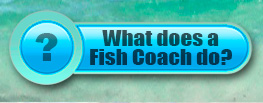 |
||||
 |
 |
|
 |
 |
FRESH WATER: THE SALT IS AWESOME, BUT THERE'S ANOTHER CHOICE
CICHLIDS (say “sick-lids,” not “chick-lids”)
When the water gets really warm, fish slow down. A lot. But the slowdown is not equal for all species. Fish from the tropics, where the water is usually very warm, are the least affected. Fortunately for Florida anglers, there are a number of tropical fish species living in the Everglades. Peacock bass are a big draw, but oscars, Mayan cichlids and spotted tilapia are also very common thoughout the extensive canal systems of the ‘Glades. Peacock bass are confined to the extreme southeastern part of the state — Basically Mimi-Dade County — but many of the smaller exotics range as far north as Charlotte County (though there are fewer since the 2010 freeze). Peacocks eat almost exclusively fish, but the other species can be easily caught using crickets or cut earthworms. Since they love the heat, summer temperatures don’t slow them down much. As an added bonus, these fish are among the most powerful fighters, pound for pound, that you’ll find in Florida waters — and they’re delicious.
CRAPPIE
Unlike some of our saltwater gamefish, which have the ability to migrate long distances, freshwater fish are stuck living here year-round. But that doesn’t mean the action is consistent — no, sir. Most local anglers who target crappie will tell you these slab-sided sunfish bite best in winter. In summer, they seek the coolest water they can find, which is usually the deepest spots, but in winter they spread out and feed aggressively. Crappie eat mostly small fish, so minnows are the bait of choice. They’ll also take grass shrimp, but it’s rare to catch one on a worm or cricket. Many fishermen prefer small marabou jigs, which are cheap and come in a variety of bright colors. Chartreuse or white is generally the top pick. Like other sunfish, crappie are structure-oriented (the better to ambush minnows). In our freshwater canals, they often utilize bridge pilings and flow-control structures. In natural waterways, downed trees are a favorite haunt. Fishing near the bottom early or late in the day usually delivers more crappie strikes. These fish have sweet white flesh and are probably the best of our native freshwater fish for the table. You can eat them fried or fried.
CRICKETS FOR BAIT
When you were a kid, you probably caught crickets to use for panfish bait. Crickets are still great bait, but flipping cover in Southwest Florida often turns up unwanted critters, from fire ants to coral snakes. So when you get a hankering to go after bluegills, redears and Mayan cichlids, you’re better of buying crickets. Unfortunately, most bait shops don’t carry them. They’re a pain to keep alive for long periods of time and they have a very distinctive smell that few people enjoy. However, there’s another place to buy them: Most pet shops keep live crickets on hand as feeder insects for pet lizards. They run about a dime each. Be sure to ask for the large size — most shops have many sizes, including some too small to fit on a hook. If you need to keep crickets alive for a couple days, they’ll need cover and food. Pieces of cardboard egg carton are fantastic as cover. Among the best food options are slices of fresh potato or oranges; dry dog kibble will also work. For moisture, a piece of damp sponge in a mayo jar lid is easy, won’t spill and won’t drown your bait. Are they worth the trouble? Well, that’s up to you — but a lively cricket is hard for even the biggest bluegill to turn down.
PEAK SEASON
With so much going on in the saltwater world in spring, it’s easy to overlook freshwater fishing. But this is when sweetwater angling is at its peak. Warmer water has fish actively feeding, but until the rains start to pour down every day, they have a lot fewer options about where to be. Canal action to our south is simply incredible — it’s no trick to fill a cooler with tasty and scrappy Mayan cichlids and tilapia in the Everglades, and the peacock bass fishing offers more action that you can probably handle. Bass are feeding heavily as they recover from their spawning chores, and with food harder to find until the creeks start flowing hard, they’re ready to pounce on almost anything you want to throw their way. If you like fishing small ponds and other little-used spots, this is the time of year to look for them. If you wait, you might select fishless areas that hold water only when it’s rainy. Once the daily storms begin, the predators will spread out, making it that much harder to target them. Get out there and get while the getting is good!
WHERE TO FISH
Although Southwest Florida is blessed with a huge number of places to go saltwater fishing, the same is not true of freshwater spots. We have no large lakes and river access is somewhat limited. If you don’t want to haul the boat to Okeechobee, what options do you have? Well, there are lots — they’re just smaller spots. Many are on private land, so asking permission first is always the best plan. However, asking permission is tough when you can’t find the landowner (the Charlotte County Property Appraiser’s website at https://www.ccappraiser.com/rp_real_search.asp can be a useful resource to track them down). Golf course ponds are usually full of fish, but access is often denied (those fish are jacked up on chemicals anyway). Retention ponds often hold surprisingly large fish, and many business owners will OK fishing if you ask. Freshwater canals are good choices, with the Cocoplum Waterway and drainage ponds along Kings Highway among the easiest to get to. The Webb WMA boasts several large and many small ponds, all of which hold fish of varying sizes. The canals in Collier County and the Everglades are filled with exotic fish such as oscars and spotted tilapia, making a road trip south a worthwhile excursion. Still, for bank fishermen, most of the best spots are simply out of reach. Your best bet is to get a kayak or lightweight canoe, which can be launched from almost anywhere you can get to the water’s edge, and then fish where you want. That will open up not only miles of canals but also vast reaches of the Peace and Myakka rivers, Shell Creek and Horse Creek — plus it’s a great cardio workout. Feel the burn! Just remember you’ll need a freshwater license to fish these areas, and there’s no free pass for shorebound anglers like there is in the salty stuff.
Still have questions? This site is a work in progress and more information will be added over time. Meanwhile, email me and let's see if we can get you some answers.
All content on this website is the intellectual property of Josh Olive and may not be reproduced without written permission. Links are welcome.